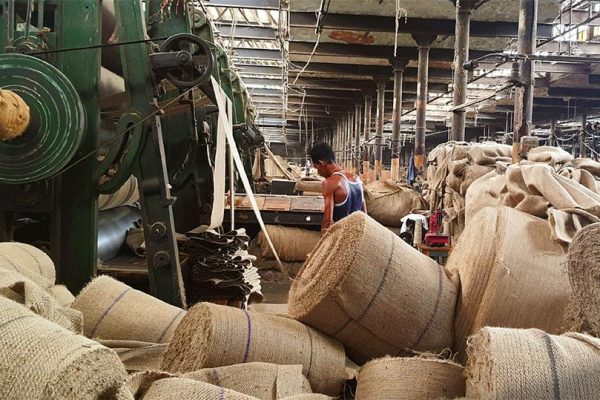Project Report For Jute Mill
Introduction
Project Report For Jute Mill Is As Follows.
A jute mill is a type of industrial facility dedicated to the manufacture of jute fibres and jute goods. Jute is a natural fibre made from the stems of the jute plant, which is mostly cultivated on the Indian subcontinent and other climate-appropriate places.
Jute fibres are utilised extensively in a variety of sectors, including textiles, packaging, construction, and agriculture. The arrival of jute bundles at the mill begins the jute mill operation. The jute stems are retted first, which entails soaking them in water to help separate the fibres from the woody stalks. The retted jute stems are subsequently stripped, which involves scraping off the outer bark to expose the long jute fibres.
The jute fibres are bundled and delivered to the jute mill for further processing once they have been stripped. The fibres go through a succession of steps in the mill before becoming useful jute goods. The first stage is the batching process, which cleans and purifies the jute fibres. Shaking, pounding, or carding are examples of manual or mechanical processes. Using spinning machines, the fibres are spun into yarns after batching. The jute fibres are twisted together during the spinning process to generate continuous strands of yarn. These yarns can then be processed further to produce a variety of products such as hessian yarn, sacking yarn, carpet backing yarn, and twine.
The jute threads are then interwoven to make jute textiles in the weaving step. Depending on the size and technology of the mill, this can be done on handlooms or power looms. Jute textiles have a wide range of uses and are used to make bags, sacks, rugs, curtains, and a variety of other textile goods. Jute mills may contain facilities for jute dyeing, printing, and finishing in addition to spinning and weaving.
These techniques improve the jute textiles’ aesthetic appeal and performance capabilities, allowing for a broader choice of goods and design alternatives. Jute mills frequently implement quality control techniques to assure the production of high-quality jute fibres and products. This can include assessing the tensile strength, moisture content, and other qualities of jute fibres and textiles.

Types Of Jute Mill
Raw Jute Processing Mills: These mills concentrate on the early phases of jute production. These mills specialise in retting and stripping, which include treating jute stems to extract the fibres from the woody stalks. They prepare raw jute fibres for further processing by cleaning, batching, and bundling them.
Jute Spinning Mills: Jute spinning mills transform raw jute fibres into threads. These mills twist the jute fibres together with spinning machinery to create continuous strands of jute yarn. Jute spinning mills make a variety of yarns, including hessian yarn, sacking yarn, twine, and carpet backing yarn, which are used in a variety of jute goods.
Jute Weaving Mills: Jute weaving mills specialise in weaving jute strands into jute textiles. They interlace the jute yarns using handlooms or power looms, resulting in a diverse assortment of jute textiles with varying textures, patterns, and weights. Jute weaving mills make textiles for a variety of uses, including bags, sacks, rugs, curtains, furniture, and more.
Jute Dyeing and Printing Mills: Jute dyeing and printing mills work with jute fabrics to add colour and patterns. These mills provide dyeing capabilities for jute fabrics that use various dying processes and technologies. They may also use printing techniques like block printing, screen printing, or digital printing to impart patterns or designs to jute textiles.
Market Potential Of Jute Mill
The worldwide jute mill market was worth USD 1.51 billion in 2021 and is predicted to grow at a 3.4% CAGR between 2023 and 2030, rising from USD 1.56 billion in 2022 to USD 1.93 billion by 2030.
Several factors are likely to boost the market potential of jute mills in 2023. For starters, there is an increasing global need for eco-friendly and sustainable fibres, and jute is one of the most environmentally friendly solutions. Jute product demand is expected to rise as consumers and companies become more aware of the need of sustainable practises.
Jute’s flexibility extends beyond packaging. Jute textiles are used in the textile industry to make home furnishings, carpets, rugs, and clothing. Geotextiles made of jute are used in soil erosion management, landscaping, and agriculture. The market for jute-based goods is predicted to increase since they provide a renewable and biodegradable alternative to synthetic materials.
